A heat pump is commonly found in homes across the country. It typically is two parts – an indoor unit, which pushes around the air, and an outdoor unit which some folks often mistake as a central air conditioner. Commonly, ducts are used to transport the heated or cooled air, though there is a heat pump that can be used without them. A heat pump may use the outside air as its source for heat or can be used with a separate heating unit.
Whether a home is in the process of construction or a simple remodel, a heat pump can be found replacing the older, traditional oil furnaces and window air-conditioning units.
How Pumps Work
This handy tool offers a very efficient way to heat or cool a home – it moves heat from a cool place (outside) to a warm space (your home). In essence, the cool space becomes cooler and the warm space becomes warmer. For the warmer months, the process is reversed.
Because the pump is transferring heat instead of generating it, the cost for making your home more comfortable is greatly reduced than by a traditional radiator system or furnace.
Types of Pumps
For houses heated with electricity in moderate climates, pumps are exceptionally efficient. In Florida, pumps reduce the cost of heating and cooling a home by nearly 40 percent over a standard central air conditioner. The pumps provide better air quality as they control humidity more effectively, which is a major factor in overall home comfort and respiratory health.
Air-Source
This is the most common pump found and used with a system of ducts leading throughout the home. It heats by transferring the heat between the outside air and your home.
Mini-Split
Used without a duct system, this type also transfers heat with air. This heat pump is effective in mild or cold climates. It is comprised of an indoor unit which handles the air and an outdoor compressor. A conduit links the two which contains refrigerant tubing, a condensate drain and suction tubing.
Radiant Floor System
Instead of air, the system transfers heat using water. The water is heated and sent through pipes just below the flooring. Some systems use a water heater, which can also supply the household for its hot water needs. A direct system requires a heat exchanger; whereas an indirect system does not.
Geothermal
Though this version is more expensive when it comes to installation, the cost to running it is is lower than others. It takes advantage of heat transference from the ground or a nearby water source. Therefore, the temperatures of its source are more consistent and found in more severe climates.
Absorption
Instead of transferring heat from the ground or water sources, heat is created for its source. It is driven by a heat source, such as solar-heated water or propane. Ammonia and water are used in tandem to provide heating or cooling. The ammonia is condensed to release heat to either heat the home or be pulled away from the home for its cooling mode.
Maintenance Is Key
When you maintain your heat pump, you save yourself up to 25 percent in consumption costs.
Poor circulation causes inefficiency across the whole system as well as failures. Often, system failure is caused by a dirty filter. The filter costs only a few dollars, but not changing it can cost literally thousands of dollars as the entire unit must be replaced when it finally shuts down.
The most common reason for system failure is a dirty filter. Avoid the unnecessary expense and add a reminder to your calendar. For best results, change or clean the filter each month. Preparing the pump for winter is a part of this checklist.
Good Maintenance Habits
-
Check the manufacturer’s instructions about maintenance and follow the directions.
-
Inspect the outdoor coils regularly. Clean them when they are dirty – carefully.
-
Turn off the power to the fan and clean it on a regular basis.
-
Remove debris from the perimeter of the outdoor unit.
-
Often check the supply and return registers. Straighten bent fins and clean the registers.
-
Visually check filters every month. Clean or change as necessary.
Regular Service Calls
You may think you are saving money when you maintain your system yourself. However, you may overlook something critical or are lacking the right tools to make accurate measurements if you are not fully trained. An annual check is recommended by the US Department of Energy. They suggest the following be checked each year during the service call:
-
Ducts, filters, blowers and the indoor coils should be inspected for dirt and obstructions.
-
Inspect the ducts for leaks. If found, properly seal them.
-
Measure the airflow of the ducts and verify it is adequate.
-
Check for leaks in the refrigerant.
-
Measure the charge in the refrigerant and verify it is adequate.
-
Clean and tighten any electric terminals. Apply a non-conductive coating to them.
-
Look at the belts for wear and ensure they are the proper tension.
-
Cycle through the controls, to confirm when set on cooling, the heat is locked out and when set on heat, the cooling portion is restricted.
-
Demonstrate that the thermostat operates correctly and is true to its temperature setting.
Don’t be lulled into thinking that you are saving money on services calls by performing them yourself. Instead, really save money by maintaining your system professionally. Overall maintenance on a system is much more cost effective than dealing with the expense and inconvenience of an emergency call during a system failure.
Heat pumps and the entire system in which they are an integral part are complex systems. Without proper knowledge and tools, details may be overlooked which may cause a full system shutdown.
Give us a call, stop by or check out our website. We have made it our business to be here when you need us.


